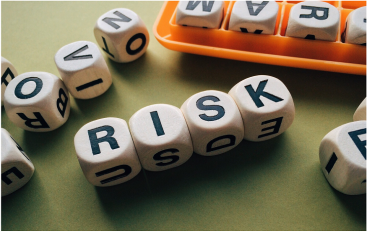All of life is the management of risk. All of life is not the elimination of risk.
The broadly and sometimes mistakenly held belief that economic growth has nowhere to go but up may have made many of us feel that any risks seem somehow less severe when weighed against the widening global opportunities. However, in the past few months, the dream of unhindered economic growth has brought many nations to a dangerous crossroads. The word “uncertainty” has begun to loom much larger in the minds of nations and corporate leaders around the globe.
Today, more than ever before, national and international leaders and businesses are being challenged with increasingly difficult and diverse responsibilities, including understanding and employing decisions based on intense and complex situations. Leaders are also faced with a flood of internal and external factors driving success or failure. In the current global order, business professionals will need to urgently expand their existing base of knowledge related to various risk management strategies to be successful in a sustained manner in the global marketplace. And the environment is becoming more intense and complicated.
Managing risk effectively is a universal challenge. And when it spans multiple countries, industries, and regulatory environments, the complexity grows exponentially. Strangely, for the majority, risk management is often viewed as a compliance checkpoint and an expensive cost instead of being an opportunity to support an organisation’s long-term growth. Yet, some of the most successful global companies embrace risk management to establish stakeholder confidence and support revenue growth.
We all face risk in various forms: risk exists when we decide to make a strategic change, take on a new partner, expand into a new market, or adapt to a new venture. Effective risk management enables us to not only handle these risks but also empowers us to face them with grit and determination.
In today’s world, risk management is no longer just about mitigating threats. It is about proactive adaptation and strategic innovation.
Here are some of the most important emerging trends:
– Advanced Cybersecurity Measures: With the increasing frequency and sophistication of cyber threats, cybersecurity remains a critical focus. Good companies have already started implementing advanced intrusion detection systems that use ML to learn from historical data, thereby improving their ability to flag unusual activities that could indicate a breach.
– Artificial Intelligence (AI) and Machine Learning (ML): AI and ML are profoundly impacting risk management by enhancing predictive capabilities and decision-making processes. They can be particularly effective in areas like fraud detection, market risk assessment, and cybersecurity.
– Climate Risk and Sustainability Focus: Organisations are integrating climate-related risks into their risk management frameworks, driven by regulatory pressures and a growing recognition of the financial impacts of climate change.
– Regulatory Technology: Streamline compliance by using software to manage regulatory processes, offering efficient ways to stay updated with global compliance standards and reduce operational risks related to non-compliance.
– Remote Work Risk: The shift to remote work has introduced new risks, particularly in the realms of cybersecurity, employee engagement, and productivity.
– Digital Security: Digital transactions are growing exponentially. This trend includes the development and implementation of advanced encryption techniques and the strategic use of digital signatures and certificates to secure and verify data transactions.
More companies are moving to a higher level of maturity in their risk management processes, focusing more on proactively managing risk rather than reactively mitigating it. However, there is a very large number of companies that still have a long way to go in adopting best practices in risk management.
Some of the key lessons or pointers are:
-Risk management needs to have a clear “owner” to be effective. Having a single, identifiable individual with a very clear, non-negotiable mandate, who is charged with the entire company-wide risk management responsibility, is a key factor in driving success in this area. This individual must mandatorily ensure that risk identification and management are a standardised process throughout the organisation. This individual must also have a very close connection with the CEO and the board.
-A truly successful risk management culture is focused on driving sustainable and profitable growth rather than simply protecting against downside losses and operational risks.
-Too often, companies identify risks only after they have impacted the bottom line. To reverse this, companies need to analyse potential risks before new initiatives are adopted. Companies also need to move beyond relying on internally developed risk measurement procedures. They need to start using more sophisticated risk metrics that enable them to measure potential impacts on an ongoing basis. Companies must look deeper and wider to determine what their most serious risks will be in the long run.
-The biggest challenge will be the art of managing expectations. If the clearly defined “owner” of this role is not able to articulate and convince stakeholders what risk management can do and what it cannot do, then the gap will be most apparent. It requires just one stakeholder to influence the rest and say that the cost of implementation is too high or a waste of time.
-There must be a “three-layered defense” – Line Management, Risk Management (including legal and compliance), and audit.
The success of any organisation depends on organisational leaders.
Therefore, this discussion brings in challenging questions to board members and senior executive leadership. Are they looking for only short-term financial results or long-term organisational results by handling global risk effectively. In a fast-changing world, organisations will need to look for transformational boards and leaders who have the vision to translate organisations into high-performing cultures in a globally integrated world.
Finally, the rapid pace of disruption brings new risks and threats for organisations. It also requires them to find a different way of managing risk – one that acknowledges the role of trust as a competitive differentiator. Risk and trust are inextricably intertwined. Loss of trust is possibly the biggest risk that a business can ever face since everything else depends on it.

